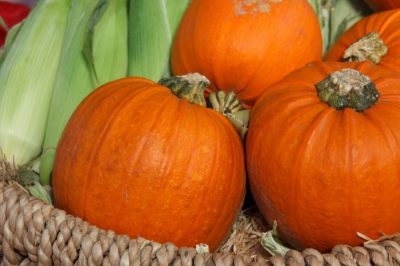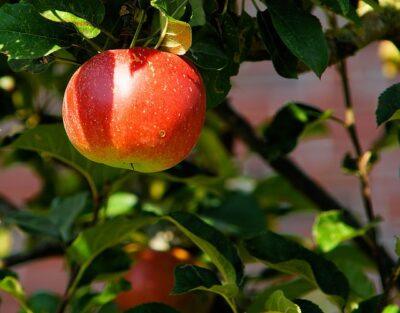Many people consider autumn to be the beginning of the end when it comes to gardening. Considering the fact that Thanksgiving is just around the corner, you might consider sitting back and enjoying your harvest during these last few months of gardening season. But there is still more that can be done in your garden to help you enjoy it to the fullest for both this season and the next.
Planning for next season starts now. Think about how well you garden worked for you this year. What went well? What was a disaster? What new things would you like to try next year?
Here are a few autumn gardening tips to ensure that you get the best bounty you can from your garden this fall as well as to help prepare your garden for next season:
1. Plant your garlic – If you enjoy beautiful fresh garlic scapes in the spring and flavorful bulbs in the summer, the time to plant is now. Take a few bulbs and separate the cloves, planting them pointy side up before your first frost. The larger the cloves that you plant, the larger the garlic bulbs you will have next summer.
2. Try a tomato-ripening secret – If you’re like most gardeners this time of year, you probably have lots of unripe tomatoes still on the vine. Try pulling the plants out by the roots and hanging them upside down in a cool, dry place. Your tomatoes will finish ripening in no time. Another way to let your tomatoes ripen is to simply bring them indoors – and if you wish to speed up the process, you can always try putting them inside a paper bag with a banana.
3. Plant some of next year’s crops – Some vegetables can actually be planted now and will overwinter, giving you an earlier crop next season. Spring cabbage, fava beans, peas and Swiss chard are all examples of crops that can be planted in late summer or early fall.
Don’t Plant Anything But Non-GMO Seeds. Get Them Here … [2]
If you have a greenhouse or use cold frames, you’ll have even more options and can even get harvests throughout the winter.
4. Move your fruit – If you’re planning to transplant fruit such as raspberries, strawberries or rhubarb, make sure that you do so well before the first frost. This will give them a chance to establish roots and better stand up to the winter weather. Plants like strawberries and rhubarb are heavy-feeders and should be moved every three to four years to keep the soil from becoming depleted.
5. Bring herbs indoors – Want fresh herbs at your fingertips this winter? Then go out to your garden and dig up basil, rosemary, thyme and other favorites and bring them indoors and grow them as houseplants. Locate them in a cool and sunny spot and keep the soil moist. If you have herbs that have been especially prolific this year, you may even want to divide them up and share them with friends and family.
6. Plant fruit trees – Did you know that in some parts of the country, autumn is the ideal time to plant fruit trees? (Ask your local garden center.) Think ahead to next year and plan what new fruits you might want to add to your backyard bounty. Apples, cherries, pears, apricots and figs make wonderful and healthy additions to your harvest table. Remember to stake young trees and protect them from harsh weather.
7. Protect your sunflower seeds – Sunflower seeds are best when you leave the head of the flower to die completely before you harvest them. Unfortunately, birds can quickly strip a flower of its seeds before this time.
Without A Doubt The Best Kept Secret In Indoor Self-Reliance Gardening… [4]
To keep birds at bay, try covering the heads of the flowers with cheesecloth. Once the flower and seeds are completely dry, harvesting the seeds is simple.
8. Make compost – Making your own compost is easy to do and if you start now, you will have beautiful black compost ready for your spring garden next season. Use a combination of leaves, veggie scraps and manure and turn it occasionally with a garden fork. Compost will add much-needed nutrients to your garden and help your plants stay healthy next season.
9. Add mulch – Adding mulch is a great way to keep weeds at bay and prevent soil erosion. Just make sure you remove any existing weeds first.
10. Shine up those tools – Don’t simply throw those garden tools into the shed. Get them ready for next season! Disinfect and sharpen pruners and other cutting tools. For tools with wooden handles, give them a light sanding and then apply linseed oil. If rust is a problem, use a penetrating oil and then scrub of the rust with steel wool.
The end of summer doesn’t have to mean the end of gardening for the season – in fact, performing a few simple gardening tasks this fall can help you have an even more amazing garden when next season rolls around!
What would you add to this list? Share your tips in the section below:
Learn Dozens Of Organic Gardening Secrets. Read More Here. [5]

